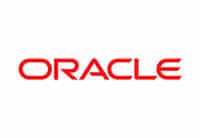This Java Design Patterns training reviews common patterns specific to Java SDK & EE development. Lab exercises teach you to identify, apply and re-factor these patterns into code, using a NetBeans or Eclipse IDE and the GlassFish Application Server v3.
This Java Patterns course reviews common and emerging patterns specific to Java SDK and EE development. You’ll learn the depth and evolution of pattern-based techniques in Java, with particular emphasis on Java EE 6 conventions.
Learn To:
- Dinstinguish between Java EE 5 and Java EE 6 pattern-based features.
- Implement relevant patterns in each tier of the Java EE environment.
- Re-factor code to improve inter-tier communications.
- Relate pattern-based development to an implementation architecture.
- Apply object-oriented pronciples and design guidelines.
- Implement well-known patterns to Java-specific code problems.
Lab Exercises
The lab exercises show you how to identify, apply and re-factor selected patterns into code, using a NetBeans or Eclipse IDE and the GlassFish Application Server v3. You’ll also learn a subset of UML notation to expedite communicating through design instead of code.
Java Design Patterns
In design patterns, the responsibility of each component is identified by role. The conventions of design pattern documentation make it easier for development teams to communicate their programming intentions and provide a reference point for the entire Java development community.
Java-Based Frameworks
The Java language and popular Java-based frameworks incorporate more proven development practices into their programming interfaces with each major release. These practices, referred to as design patterns, document well-known names, code implementation and re-factoring techniques, and the risks and trade-offs associated with using them.





